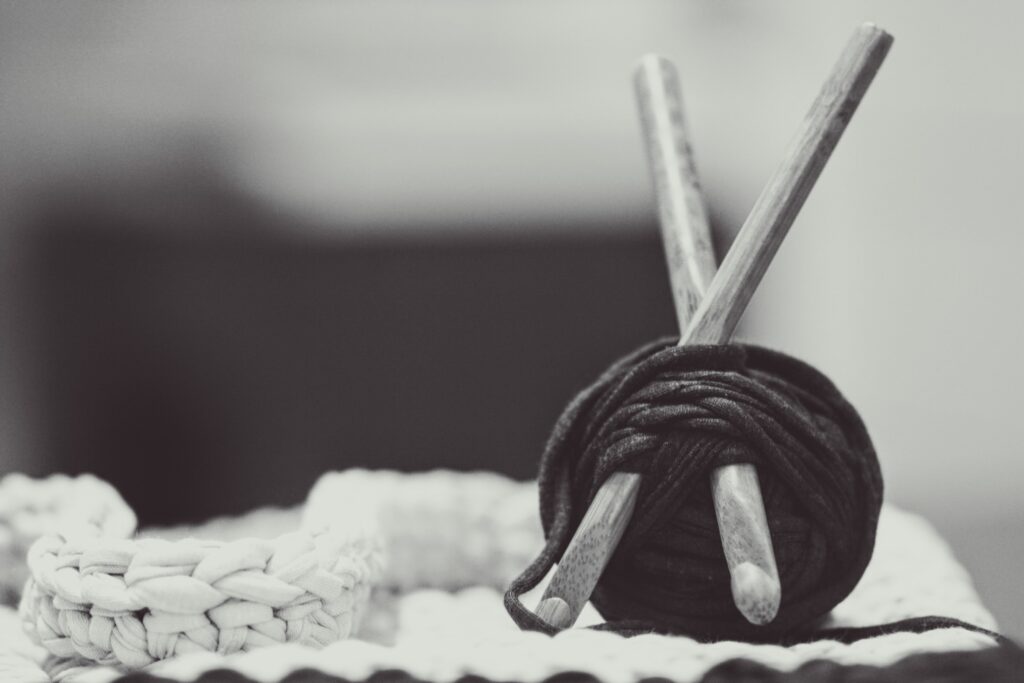Have you ever played the “yarn chicken” game? If you are an experienced crocheters and/or knitter you will most likely answer yes to the question. If you are new to the world of yarn craft your answer might be a blanket stare. What is she on about? Has she lost her marbles? “Yarn Chicken” what’s that? And why would I want to win it?
“Yarn chicken” is a term that is commonly used to describe the act of trying to complete a crochet or knitting project using a limited amount of yarn. Have you ever wondered if you are able to make the next round with the yarn you still have available? Then you’ve been playing “yarn chicken” :) You are trying to “race” against the yarn to see who wins. The yarn or you. There is always one clear winner at the end of it.
It might just be me, but I love to find out if I can make it to the end! Especially thrilling when you crocheting a larger project. Sometimes I think that crocheting faster will help me to win the game. Stupid I know as this isn’t actually how you win it!
Therefore I’m sharing some tips and tricks that will help you win your next yarn chicken game:
Gauge Swatch
Unless you’ve got an unlimited supply of your yarn or know that the dye lot won’t have that much of an impact I always recommend making a gauge swatch before starting any new project. This is especially important when you crochet a pattern from “new-to-you” designer. Depending on the gauge the pattern is using your outcome might differ drastically. It is also important if you use a new set of hooks (yes a different hook can have an impact on your gauge!) or if you use a yarn that you haven’t used before.
Check your Stash
That might be an obvious one but always make sure that you’ve got enough yarn before you start your project. A pattern usually states how much yarn you will need. If you checked your gauge and it matches the pattern you’re good to go. If not you may have to buy more yarn or adjust your gauge accordingly to make sure you don’t run out of yarn halfway through your project.
Length method
This method will work best when you do not have any increases in your pattern so that the amount of yarn you need per row/repeat is the same. It’s better when you do it before you adventure on your last repeat which you are certain that you will have enough yarn for. Find the half-way point in your remaining yarn and make a little removable knot. Now you can crochet your next repeat. When you hit your knot while doing so you won’t have enough yarn to add any more repeat. If you finish before hitting the knit you’re good to go on another repeat.
Substitute with a different yarn
If you are having trouble finding the exact yarn which is called for in the pattern, you may be able to substitute with a different yarn of a similar weight and fibre content. This however really depends on the pattern. It might be easier to add a different colour and yarn to a multi-colour project like a granny square than it is to an item that only uses a single colour.
Use your scraps
When it comes to yarn I’m a little bit of a horder. Finished off one project and got some yarn left over? Keep it. I’ve heard horror stories of people binning left over yarn. Please do not do it. When I think I really won’t have any use for the yarn in the future I will always donate my left overs to my children pre-school for crafty activities. But I make sure to have a nice collection of yarn ends in case I need only that tiny little bit to finish a project.
How do I organise my yarn scraps? That will be one topic for another time :) But do you have any tips for storing yarn scraps that you would like to share with me?
Adjust your tension
This one is more of an advanced trick and might work for some projects better than for others. I used it very successfully on a granny square blanket the other day, but it might not work on your project. A tighter tension will use less yarn, but your fabric might be a little bit more stable in this particular place. I recommend going down no further than half a hook size to make the tension difference not to big. But it works perfectly for those projects where you only need a tiny little bit more to make your yarn work out for you.
Weigh your yarn
Now, this is a pro-method, which I personally tend to use when I design a shawl pattern or pattern that uses hand-dyed yarn, which is either expensive to buy and/or difficult to get hold of when you run out of it. You’ll need an extra tool for this to work though and this is a fairly accurate scale. I use my digital kitchen scale for it, your bathroom scale wouldn’t work but there is also no need to go as specialised as the laboratory scales I used during my unidays.
Before you start your next row/round weight the remainder of your yarn. Note down this weight (this is your starting weight).
Now finish the row or repeat and weight the remaining yarn again (this is your repeat weight).
Take away the second weight (your repeat weight) from your starting weight to find the difference. If the difference is greater than your second weight you’re good to go again if your row/repeat is not increasing. When your row/repeat is increasing you will have to do a little bit more maths.
From experience, I usually add about 10% as a safety buffer when increases are involved. However, if you even want to take the guesswork out of this you can do this by weighing another repeat. When you take the difference between the two repeat weights you will see how much yarn you require for each increase.
I really hope those tips and tricks will help you to win your next “yarn chicken” game. Do you have another tip that I could add to my list? Please feel free to reach out to me and tell me about it!
Stay updated and receive exclusive discount codes in your email inbox
Happy Crocheting!







